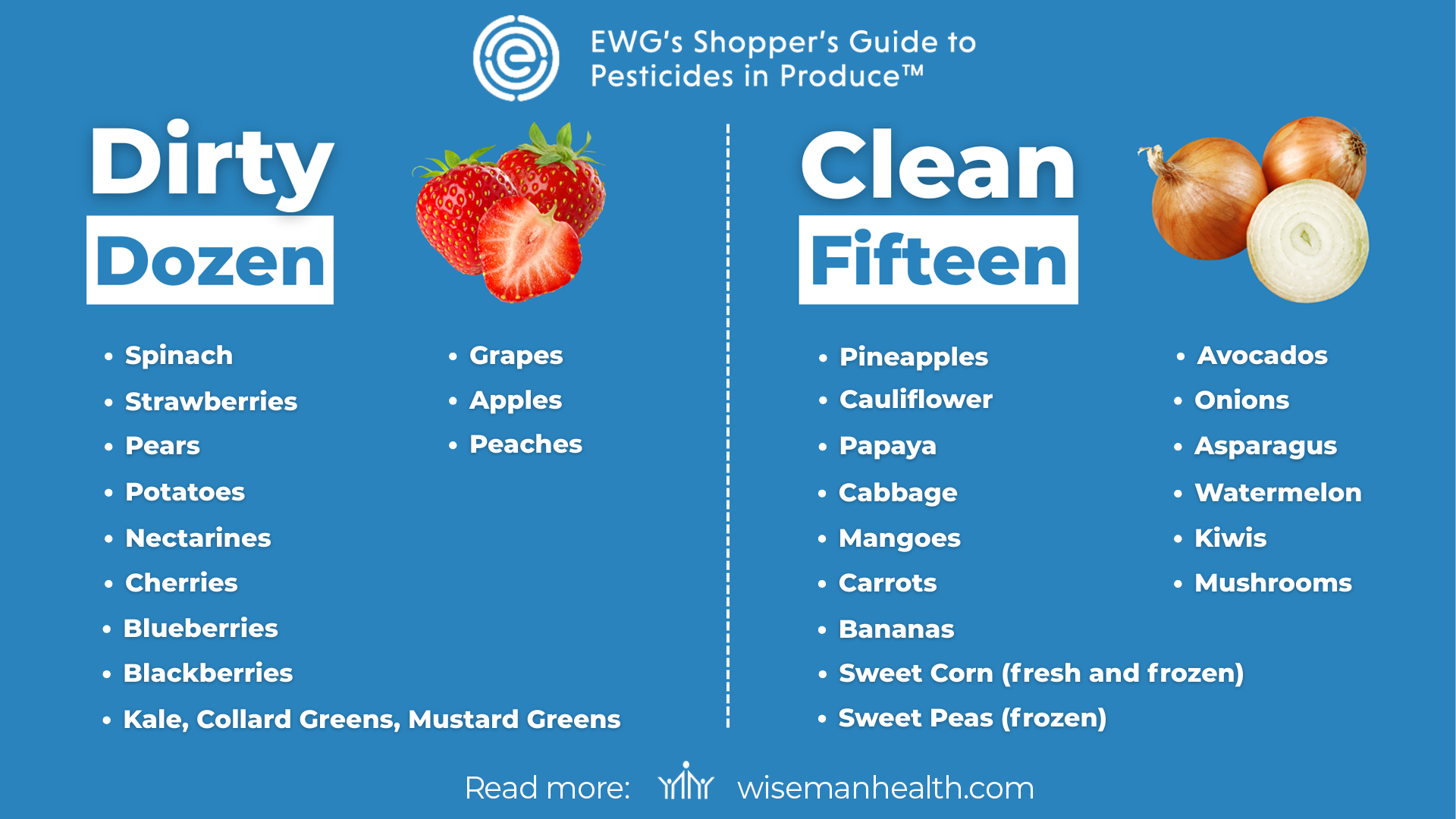Consuming organic fruits and vegetables is best practice for better health due to less exposure to chemicals and toxins from pesticides, herbicides, and fertilizers; however, it may be impractical to do this all the time because of lack of access to organic produce and/or the increased cost of organic produce. The good news is that not all fruits and vegetables assimilate and absorb toxins the same way when grown conventionally.
When purchasing organic produce is not always an option, consume the following fruits and vegetables, known as the Clean Fifteen, as they are the safest when conventionally grown (i.e., non-organic):
Clean Fifteen
- Avocados
- Onions
- Sweetcorn (fresh and frozen)
- Pineapple
- Mango
- Papaya
- Cauliflower
- Watermelon
- Kiwi
- Sweet peas (frozen)
- Asparagus
- Cabbage
- Sweet potatoes
- Carrots
- Mushrooms
Conversely, when possible, buy the following fruits and vegetables organically, as the produce below have the highest toxic load when grown conventionally (non-organic):
The Dirty Dozen
- Strawberries
- Spinach
- Kale, collard, mustard greens
- Grapes
- Peaches
- Pears
- Nectarines
- Apples
- Potatoes
- Cherries
- Blueberries
- Blackberries
Wiseman Health Take-Home Advice
- It’s always best practice to eat both fruits and vegetables. When shopping for organic fruits and vegetables, it’s important to understand organic labels in order to make an informed purchasing decision. The USDA Organic label is the gold standard for how organic foods are grown, with adherence to federal standards and guidelines. Organic farmers must follow these organic protocols to ensure products are truly organic from start to finish. For produce, this means a fruit or vegetable can receive the USDA organic label if “it’s certified to have grown on soil that had no prohibited substances applied for three years prior to harvest. Prohibited substances include most synthetic fertilizers and pesticides. In instances when a grower has to use a synthetic substance to achieve a specific purpose, the substance must first be approved according to criteria that examine its effects on human health and the environment. As with all organic foods, none of it is grown or handled using genetically modified organisms, which the organic standards expressly prohibit.”
- A good rule of thumb is the Peel Rule: If you don’t eat the peel of a piece of fruit or vegetable, then the produce is safer to consume when eaten in its non-organic form. For example, a non-organic banana is relatively safe because the peel provides a certain amount of protection, and you aren’t consuming the peel. On the other hand, with grapes and apples, we eat the whole thing — peel and all — thus it’s best practice to try to buy organic grapes, apples, and similar-type produce when possible.
- If you’re buying non-organic produce, like an apple, peeling the skin will help decrease the amount of chemicals consumed.
- With both organic and non-organic fruits and vegetables, clean thoroughly under cold running water for at least 30 seconds to remove any surface chemicals and dirt.
Editor’s Note: This article was originally published on December 11, 2013, and was updated on August 21, 2025

